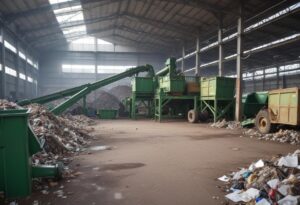Air Pollution Concerns: Can India Breathe Easy Again?
Air Pollution Concerns: Can India Breathe Easy Again?
India, a land of vibrant culture and bustling metropolises, is grappling with a severe and seemingly omnipresent challenge – air pollution. With cities consistently ranking among the most polluted globally, the health and well-being of millions are at stake. This article delves into the causes of India’s air pollution crisis, its devastating impacts, and potential solutions for a cleaner future.
A Choking Reality:
The Sources of Air Pollution
India’s air pollution is a complex issue with multiple contributing factors. Here’s a breakdown of the major culprits:
Vehicular Emissions:
India’s rapid economic growth has led to a surge in vehicles on the road. However, a significant portion of these vehicles are old and poorly maintained, spewing out pollutants like nitrogen oxides and particulate matter (PM) – tiny particles that lodge deep in the lungs. The lack of stringent emission standards and a growing reliance on private vehicles further exacerbate the problem.
Industrial Emissions:
India’s industrial sector, a key driver of its economy, is a major source of air pollution. Coal-fired power plants, brick kilns, and factories often operate with outdated pollution control technologies, releasing harmful pollutants like sulfur oxides, heavy metals, and volatile organic compounds (VOCs) into the atmosphere.
Crop Burning:
The practice of stubble burning, where farmers set fire to leftover crop residue after harvest, is a significant contributor to air pollution, particularly in northern India. This practice releases large amounts of PM2.5, the most dangerous size of particulate matter, causing smog events and respiratory problems.
Dust and Construction Activities:
Unpaved roads, construction activities, and open waste burning contribute to dust pollution, further adding to the respiratory burden.
A Looming Public Health Crisis: Devastating Impacts
The consequences of air pollution in India are dire. The World Health Organization (WHO) estimates that air pollution contributes to over 1.6 million premature deaths in India annually [1]. These deaths are primarily caused by respiratory illnesses such as chronic obstructive pulmonary disease (COPD), asthma, and lung cancer. Children and the elderly are particularly vulnerable to these health risks.
Air pollution also affects cognitive development in children, reduces worker productivity, and increases healthcare costs. Furthermore, it damages agricultural yields and ecosystems, posing a threat to food security and biodiversity. The economic cost of air pollution in India is estimated to be staggering, with studies suggesting losses in the range of billions of dollars every year.
A Glimmer of Hope: Taking Action for Cleaner Air
Despite the daunting challenges, India is not sitting idly by. Several initiatives are underway to combat air pollution:
Policy and Regulation:
The government has implemented stricter emission standards for vehicles and industries. Policies promoting electric vehicles and cleaner fuels are also being introduced. The National Clean Air Programme (NCAP) aims to reduce PM concentration by 20-30% by 2024 compared to 2017 levels.
Promoting Renewable Energy: India is ramping up its renewable energy generation capacity, aiming to reduce dependence on coal-fired power plants, a significant source of air pollution. Investments in solar and wind power are increasing, offering a cleaner and more sustainable alternative.
Sustainable Urban Planning:
Developing public transportation systems, promoting cycling and walking infrastructure, and greening cities with trees and vegetation are crucial steps in reducing traffic-related pollution and improving air quality.
Public Awareness:
Raising public awareness about the health impacts of air pollution and encouraging citizens to adopt cleaner habits can play a vital role in driving change. Promoting carpooling, responsible waste management, and avoiding stubble burning are essential steps towards cleaner air.
A Collective Effort: The Road Ahead
Combating air pollution effectively in India requires a multi-pronged approach. Stricter enforcement of environmental regulations, continued investment in clean technologies, and fostering international collaboration in research and development are crucial.
The transition to a clean energy future will require significant investments. Developed nations can play a vital role by providing financial and technological assistance to support India’s clean air initiatives.
Ultimately, achieving clean air in India requires a collective effort from the government, industries, and citizens. Individual responsibility, through adopting sustainable practices, is key to creating a lasting positive impact.
Can India Breathe Easy Again?
The path to clean air in India is long and arduous. However, the growing public awareness, coupled with ongoing policy initiatives and technological advancements, offer a glimmer of hope. By prioritizing clean air, India can ensure a healthier future for its citizens and a more sustainable environment for generations to come. The question of whether India can breathe easy again hinges on the collective commitment to decisive action and a shared vision for a cleaner tomorrow.
- Fur-Ever Friends Boutique: Tail-Wagging Treasures
- Critter Comforts and Beyond: Exploring the Expansive World of Pet Shops
- Paws, Claws, and Beyond: Navigating the Vast Realm of Pet Store Wonders




